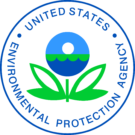When Frank Demento received a mailing from managers of his water district on Long Island last year, the news it contained seemed pretty good.
Executive Summary
Actuaries are used to dealing with numbers, but two numbers presented at a recent Casualty Actuarial Society seminar seemed to jump off presentation slides of a claims executive and an industry analyst explaining the emerging risk of PFAS. The first, 4 parts per trillion, is the EPA's new standard for PFOA and PFOS in drinking water. The second, $165 billion, is the estimate that Verisk's Arium liability modeling unit developed for potential liability claims before the application of insurance exclusions and other terms and conditions.The level of a harmful chemical, perfluorooctanesulfonic acid (PFOS), in the district’s water supply was 5.9 per trillion (PPT), and the level of perfluorooctanoic acid (PFOA) stood at 6.8 PPT. Each of the figures fell below the 10 PPT limit set by New York State in 2020 and well below a 70 PPT figure that the U.S. Environmental Protection Agency once set forth in a non-enforceable health advisory back in 2016.
The district has already built two remediation plants and is building three more, reported Demento, a senior vice president and claims manager at TransRe, who knows a great deal about PFOS and PFOA, the two most common types of PFAS—per- and polyfluoroalkyl substances—now linked to various negative health consequences for people exposed to it. The reinsurance executive was among several speakers who discussed the presence of PFAS in water supplies and in products ranging from Teflon, Scotchgard, fire-fighting foam and electronics to hamburger wrappers, lip balm, carpeting and chocolate cake icing, along with the health and legal implications linked to exposure during a session of the Casualty Actuarial Society’s Seminar on Reinsurance in June.




































